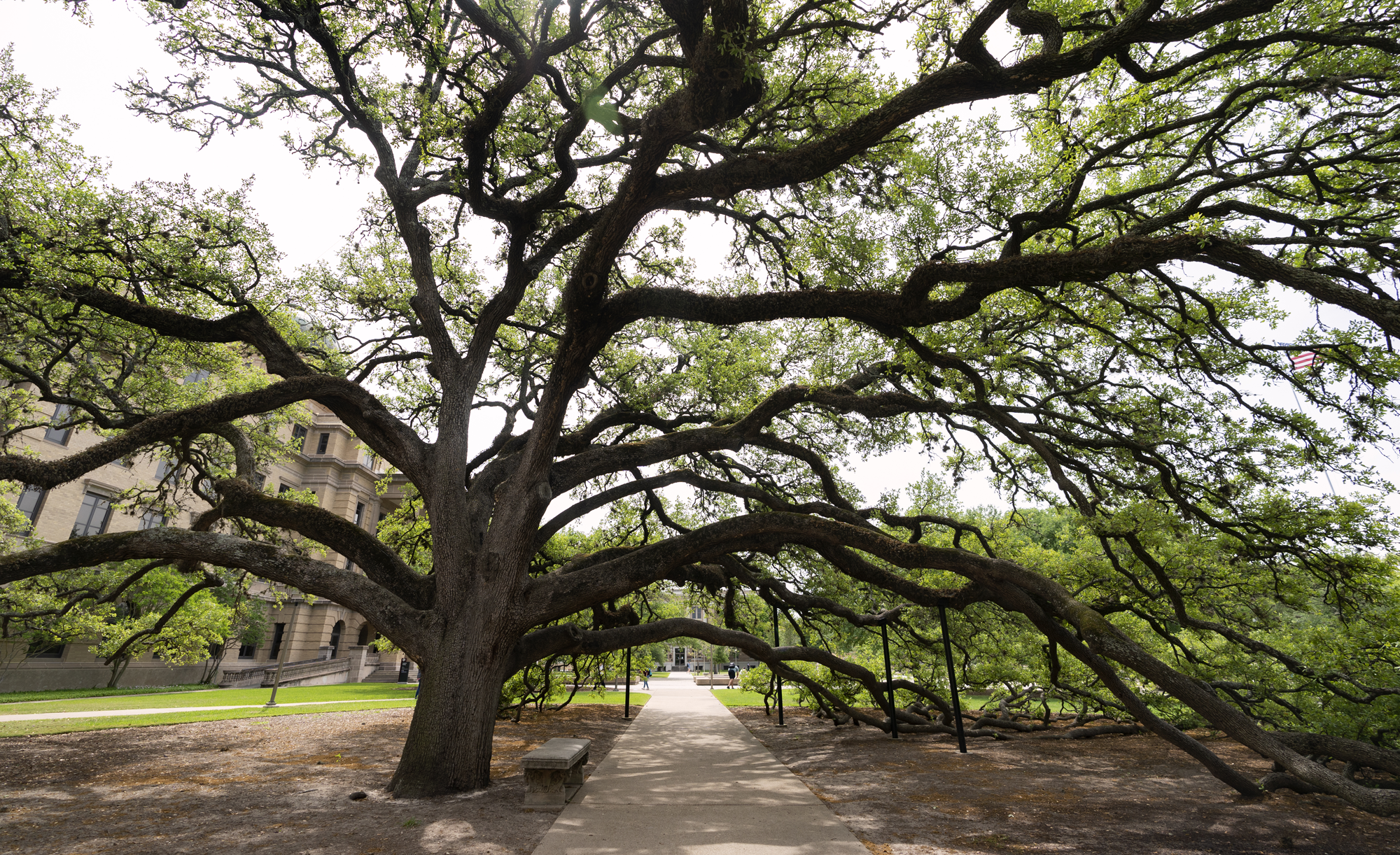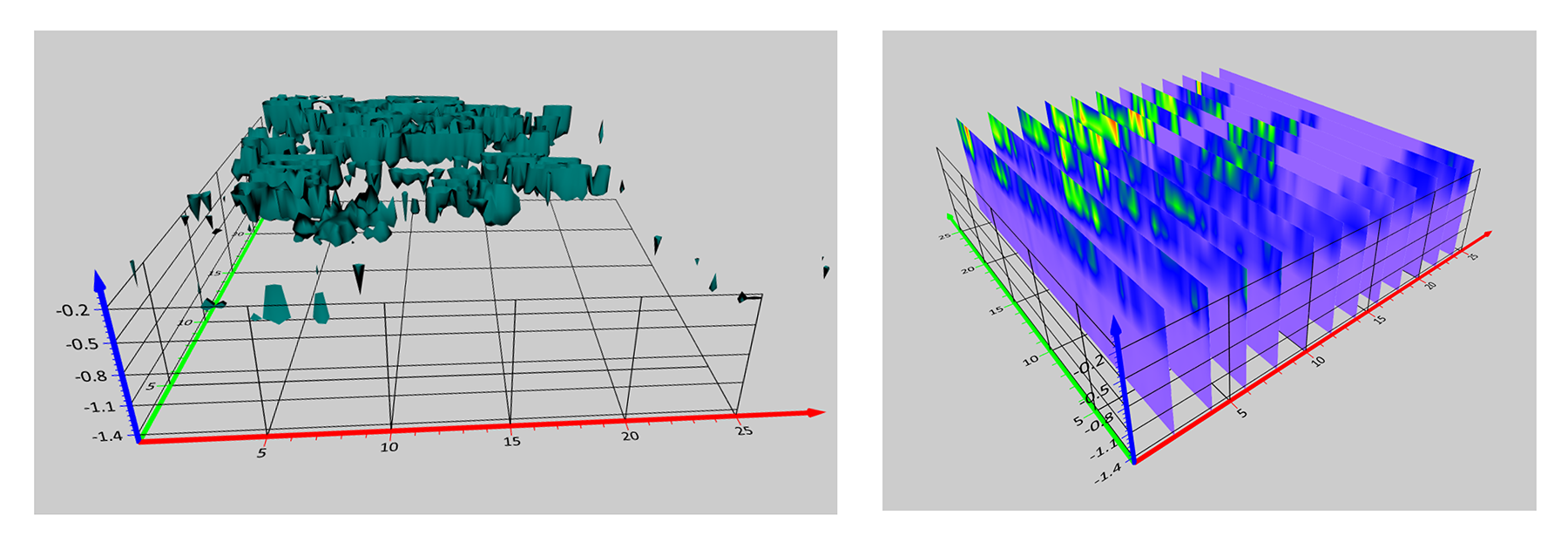
The Century Tree is one of Texas A&M’s most beloved icons—a sprawling live oak older than most campus buildings and credited with bringing good luck (and a few marriage proposals) to anyone who walks beneath its branches. But over spring break this past semester, the tree became something else entirely: a science project.
Armed with ground-penetrating radar (GPR) and guided by Texas A&M geography associate professor Dr. Dan Goldberg, a team of Aggie students from the Department of Geography’s Geographic Information Science and Technology (GIST) program partnered with the Department of Geology and Geophysics to explore the underground secrets of this legendary tree.
“We wanted students to get hands-on experience with real-world technology and data,” Goldberg said. “This was a perfect opportunity to apply geospatial tools to something meaningful—and literally close to home.”
Before the scanning began, the students carefully planned their survey by marking a grid with 0.5-meter spacing around the base of the tree—an area roughly 28 feet wide. They used GPS tools for accuracy and made directional passes with a GPR system equipped with a 500 MHz antenna—the standard frequency for general-purpose scans like this one.

With help from geology and geophysics professor Dr. Mark Everett and undergraduate student Sophia Hernandez, GIST students Claire Lifrieri and Jason Salazar used this equipment to scan the root system one pass at a time. Everett, a GPR expert, guided the team on survey techniques while Hernandez brought experience from previous root-mapping projects—a collaboration that grounded the geography students’ work in deep geophysical expertise.
The GPR works by sending radar signals into the ground and recording the echoes as they bounce back from objects below the surface—in this case, tree roots. While the equipment can scan as deep as three meters, the team focused on a depth of 1.5 meters. As it turns out, that was ideal: Most large live oaks like the Century Tree have wide but shallow root systems.
Their results matched what scientists expected: Most roots appeared in the upper 5 centimeters (0.05 meters) of soil with very few visible below 70 centimeters (0.7 meters). Still, this was the first time the tree’s roots had been mapped in such detail.
“This gives us a starting point,” Goldberg said. “If we do this again in a few years, we can see how the roots are changing—growing, staying stable or showing signs of deterioration.”
That kind of data is more than just cool—it’s critical. Knowing where the largest roots are can help prevent damage from nearby maintenance work or construction. It can also offer early warning signs if anything begins to threaten the tree’s health.

The students used GPR software tools like SliceView and Surfer to convert the scan data into 2D and 3D models. These included isosurface and slice views showing the shape and depth of the roots underground. However, the process wasn’t without challenges. Some of the exported data didn’t include exact location coordinates, meaning the students had to visually line up their models with the real-world map—a great learning experience in both technology and troubleshooting.
Of course, working under the Century Tree had its physical challenges, too. Some of its low-hanging branches touch the ground, making parts of the site difficult to access with equipment. Rainy weather and different surfaces (like concrete, mulch and grass) also made scanning harder. But the students were undeterred.
Thanks to their GIST training, the students were able to plan and execute the survey, operate the advanced GPR equipment and produce visual models that offer a new way of looking at the Century Tree—from the ground up.
The project revealed more than the tree’s roots. It showed how classroom knowledge can be applied to real-world problems and how technology can help preserve campus traditions for future generations.
And while they didn’t find any buried surprises or hidden anomalies, the team left with something even better: a deeper understanding of the tree, their tools and the kind of work they may do in the future.
“It’s where high-tech meets high tradition,” Goldberg said, “and a reminder that classroom knowledge can take root in the real world… quite literally.”
